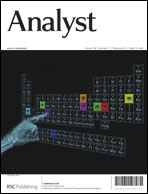Potassium ions play diverse roles in biological processes, and abnormal K+ levels are the hallmarks of diseases. However, the potential clinical application of the developed DNA-based K+ sensors remains a challenge due to the presence of Pb2+ in blood samples. In this contribution, a novel colorimetric potassium sensing assay that functions in the presence of Pb2+ is reported. This approach is based on conformational switching of a hairpin DNA structure to a G-quadruplex. Specifically, the hairpin DNA containing G-rich aptamer T30695 is exposed to successive amounts of Na+, Pb2+ and K+. These cations induce formation of the corresponding metal-stabilized G-quadruplex, which acts as DNAzyme (with hemin as a cofactor) for the catalytic oxidation of ABTS by H2O2. Importantly, studies presented here show that K+ replaces Pb2+ from the G-quadruplex to form K+-stabilized G-quadruplex, which differ in the catalytic behavior. With Pb2+-stabilized G-quadruplex as a probe, a highly sensitive and selective colorimetric detection of K+ is achieved in the presence of Pb2+ and excessive Na+ (140 mM) with the detection limit of 1.9 nM. This system represents the first known DNAzyme-based colorimetric K+ sensor, which works in the presence of Pb2+. Finally, the sensor is successfully applied for K+ detection in a real human serum sample containing Pb2+.

You have access to this article
 Please wait while we load your content...
Something went wrong. Try again?
Please wait while we load your content...
Something went wrong. Try again?


 Please wait while we load your content...
Please wait while we load your content...